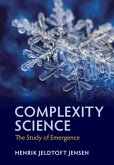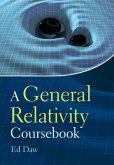This book presents a comprehensive and pedagogical text on nonequilibrium statistical physics, providing a valuable resource for both graduate students and academic researchers. It covers basic and traditional concepts of nonequilibrium physics, modern aspects concerning nonequilibrium phase transitions, and application-orientated topics from a modern perspective.
Hinweis: Dieser Artikel kann nur an eine deutsche Lieferadresse ausgeliefert werden.
Hinweis: Dieser Artikel kann nur an eine deutsche Lieferadresse ausgeliefert werden.
'Statistical physics has grown over the past few decades' way beyond its original aims for the understanding of gases and thermal systems at equilibrium, and it is hard to agree on its precise scope, let alone to write a definitive textbook on the subject. [This book] succeeds remarkably well in this task. Cutting a broad swath through the many ramifications of statistical physics in recent times, the book includes a comprehensive review of the many techniques and paradigmatic systems that have come to be regarded as standards of the field. Having solidly covered these essentials, in the third and last part of the book the authors discuss a smorgasbord of topics, from coarsening and kinetic roughening, to pattern formation, to phase-ordering phenomena, selected from their decades of research and expertise in these areas. The book is ambitious and rather comprehensive in its scope. The explanations are succinct and crystal clear, making the volume valuable not only as a textbook but also as a reference work that is sure to become ubiquitous on the shelves of students, teachers, and of young and well-seasoned researchers alike.' Daniel ben-Avraham, Clarkson University, New York








